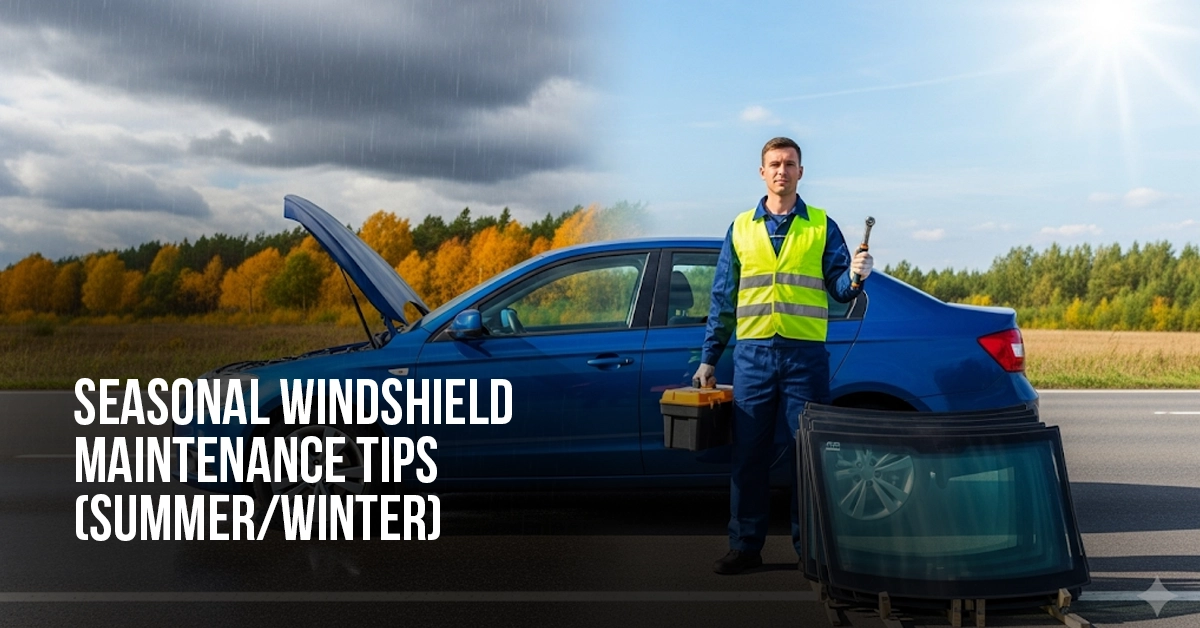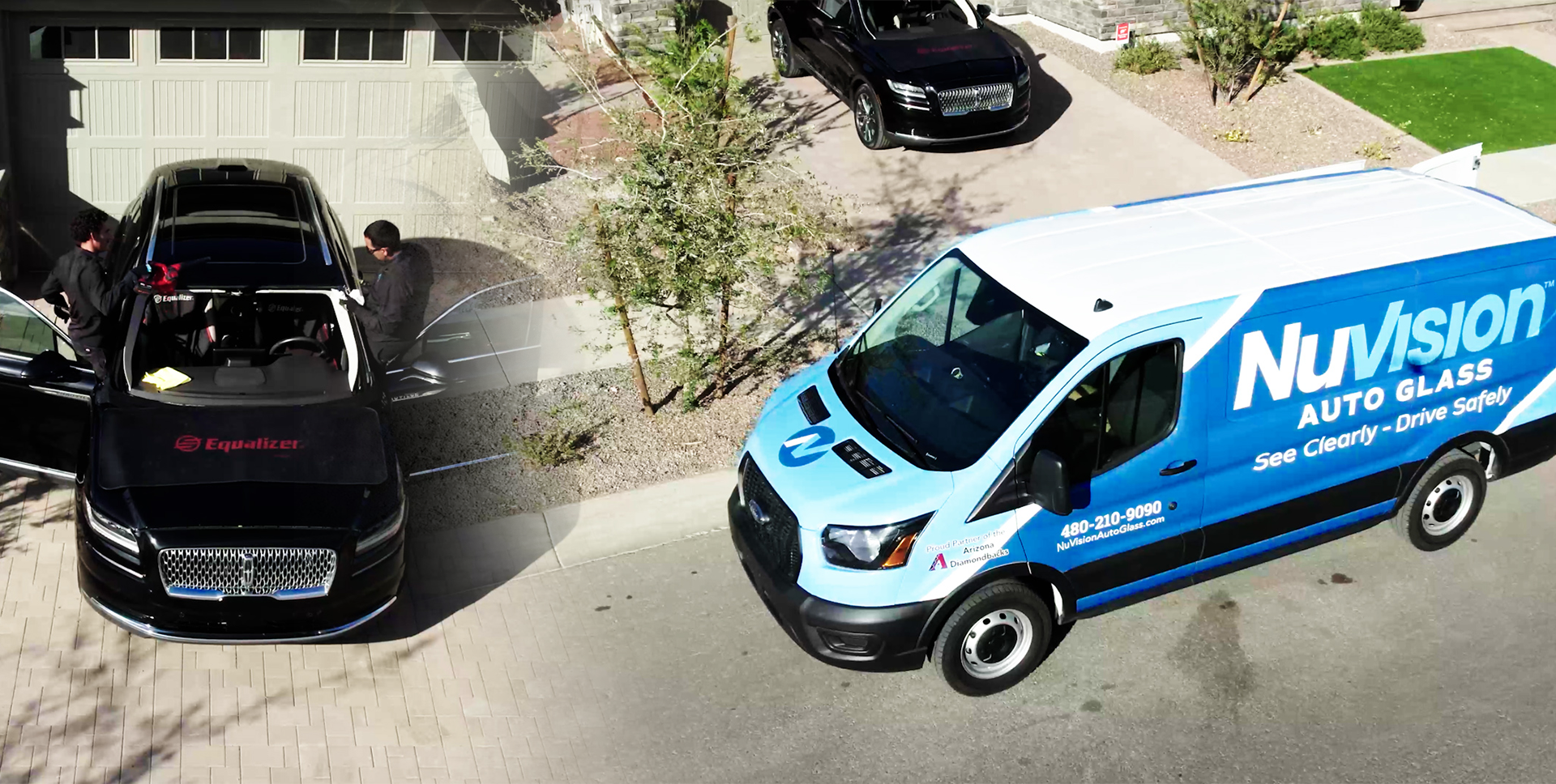Seasonal Windshield Maintenance Tips (Summer/Winter)

Quick Answer: Seasonal windshield maintenance requires different approaches for summer and winter. Summer tips include parking in shade, using quality washer fluid, checking wipers monthly, and applying UV protection film. Winter preparation involves switching to winter washer fluid, upgrading wiper blades, keeping an ice scraper handy, and warming up gradually. Regular maintenance prevents costly replacements and ensures clear visibility year-round.
Your windshield faces different challenges throughout the year, from scorching summer heat to freezing winter conditions. Proper seasonal maintenance not only extends your windshield’s life but also ensures optimal visibility and safety on the road.
Understanding how weather affects your windshield and taking preventive measures can save you from expensive repairs and dangerous driving conditions. Let’s explore the essential maintenance tips for both summer and winter seasons.
Why Does Seasonal Windshield Maintenance Matter?
Temperature Extremes
Glass expands and contracts with temperature changes. Summer heat can cause small chips to spread into larger cracks, while winter cold makes glass more brittle and prone to cracking from minor impacts.
Weather-Related Damage
Different seasons bring unique challenges:
- Summer: UV damage, heat stress, and increased bug splatter
- Winter: Ice formation, salt corrosion, and thermal shock
- Seasonal transitions: Rapid temperature changes causing stress fractures
Visibility and Safety
Clean, well-maintained windshields are crucial for safe driving. Seasonal maintenance ensures optimal visibility during challenging weather conditions.
What Are the Best Summer Windshield Maintenance Tips?
Parking and Sun Protection
Park in shade whenever possible to reduce UV exposure and heat buildup. Use windshield sunshades to protect against direct sunlight when parking outdoors. Apply UV protection film to reduce sun damage and glare.
Washer Fluid and Cleaning
Use summer-grade washer fluid designed to cut through bugs and road grime. Clean windshield weekly to remove accumulated debris. Replace worn wiper blades before summer driving season begins.
Temperature Management
Avoid sudden temperature changes like blasting cold AC on a hot windshield. Warm up gradually when starting your car in extreme heat. Check for stress cracks that may have developed from heat expansion.
How Should I Prepare My Windshield for Winter?
Winter Fluid and Equipment
Switch to winter washer fluid with lower freezing point. Upgrade to winter wiper blades designed for ice and snow. Keep ice scraper and snow brush easily accessible in your vehicle.
Pre-Winter Inspection
Repair small chips before freezing temperatures arrive – they’re more likely to spread in cold weather. Check wiper blade condition and replace if streaking or damaged. Clean windshield thoroughly to remove summer buildup.
Cold Weather Practices
Warm up gradually – don’t blast hot air on frozen glass. Use lukewarm water (not hot) to help remove ice if needed. Clear all snow and ice before driving for full visibility.
What Products Should I Use for Seasonal Maintenance?
Summer Products
- Bug and tar remover for stubborn debris
- UV-resistant washer fluid for better cleaning
- Quality glass cleaner for streak-free results
- Microfiber cloths to avoid scratching
Winter Products
- De-icing washer fluid (rated to -20°F or lower)
- Winter wiper blades with rubber boots
- Ice scraper with brush for snow removal
- Rain-X or similar products to improve water beading
How Often Should I Perform Seasonal Maintenance?
Monthly Checks
- Inspect wiper blades for wear or damage
- Check washer fluid levels and top off as needed
- Clean windshield inside and out thoroughly
- Look for new chips or cracks that need attention
Seasonal Transitions
- Spring: Switch to summer washer fluid, inspect for winter damage
- Summer: Apply UV protection, check for heat-related stress
- Fall: Prepare for winter, repair any existing damage
- Winter: Use appropriate de-icing products, avoid thermal shock
What Common Mistakes Should I Avoid?
Summer Mistakes
Using hot water on an overheated windshield can cause cracking. Ignoring small chips allows them to spread in heat. Parking without sun protection accelerates UV damage.
Winter Mistakes
Pouring hot water on frozen windshields causes thermal shock. Using metal scrapers can scratch the glass surface. Leaving wipers up may damage the springs over time.
Year-Round Errors
Neglecting wiper blade replacement reduces cleaning effectiveness. Using household cleaners can damage glass coatings. Ignoring minor damage leads to costly replacements.
When Should I Call a Professional?
Repair Situations
Contact professionals for:
- Chips larger than a quarter
- Cracks longer than 6 inches
- Damage in driver’s sight line
- Multiple impact points
Replacement Indicators
Consider replacement when:
- Cracks span multiple areas
- Damage affects structural integrity
- Previous repairs have failed
- Visibility is significantly impaired
How Can I Extend My Windshield’s Lifespan?
Proactive Care
Address damage immediately to prevent spreading. Use quality products designed for automotive glass. Follow manufacturer recommendations for cleaning and maintenance.
Professional Services
Regular inspections by qualified technicians catch problems early. Professional cleaning removes stubborn buildup. Quality repairs from providers like NuVision Auto Glass ensure lasting results.
The Bottom Line
Proper seasonal windshield maintenance protects your investment and ensures safe driving year-round. Summer care focuses on UV protection and cleaning, while winter preparation emphasizes proper fluids and gradual temperature changes.
Regular maintenance prevents small problems from becoming expensive repairs. When professional help is needed, established providers like NuVision Auto Glass offer quality service and lifetime warranties.
By following these seasonal maintenance tips and addressing issues promptly, you’ll keep your windshield in optimal condition regardless of weather conditions.
FAQs
How often should I change my wiper blades?
Every 6-12 months or when they start streaking, chattering, or leaving gaps.
Can I use regular glass cleaner on my windshield?
Use automotive glass cleaners to avoid damaging special coatings and ensure streak-free results.
What temperature washer fluid should I use?
Summer fluid in warm months and winter-grade fluid (rated to -20°F or lower) in cold climates.
Should I warm up my car before driving in winter?
Yes, allow gradual warm-up to prevent thermal shock and improve visibility.
Can small chips really become big cracks?
Yes, temperature changes and road vibrations can cause small chips to spread quickly into large cracks.
How do I remove ice without damaging my windshield?
Use plastic ice scrapers, lukewarm water, or de-icer spray. Never use metal tools or hot water.
What’s the best way to clean bug splatter?
Use bug and tar remover or soak with warm, soapy water before gently scrubbing with microfiber cloth.
Should I leave my wipers up in winter?
It’s better to leave them down to avoid spring damage, but clear ice carefully before using.
How do I know if my windshield needs professional attention?
Contact professionals for chips larger than a quarter, cracks over 6 inches, or damage in your sight line.
Can I prevent windshield damage completely?
While you can’t prevent all damage, proper maintenance and care significantly reduce risk and extend windshield life.

